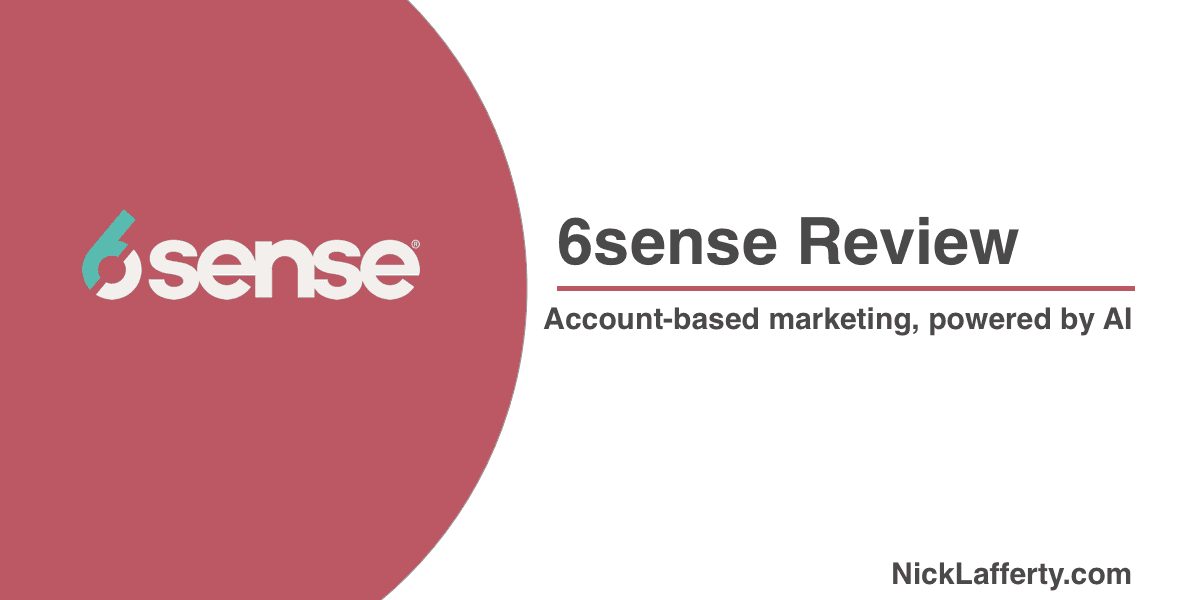6sense is an account-based marketing platform that helps companies market and sell to their target accounts.
6sense is headquartered in San Francisco, California and has almost 500 employees. They raised a $125 million Series D investment in March 2021 at a $2.1 billion valuation.
It’s one of many ABM platforms on the market today, but it was the first to market with an artificial intelligence powered predictive model.
I went through an extensive vendor review process with Mailgun, the company I used to work for. I’ll write about what vendors I reviewed and why we ultimately purchased 6sense.
Do you want a personal intro to the 6sense team? Send me an email.
Why should you trust me?
I’m a professional growth marketer with a background in SaaS and lead generation.
I currently work for Loom, a workplace video messaging platform.
Prior to Loom I worked at Mailgun by Pathwire, an email service provider that sends over 20 billion emails/month for brands like Lyft, Substack, Patreon, and more.
I help grow the amount of visitors to our website each month, how many users sign-up for our product, and how many of them submit leads to talk to sales.
My job is measured by growing web traffic and total revenue. 6sense, and other ABM platforms, can help achieve that goal.
This review will contain screenshots from a real 6sense account.
Disclosure
There are no affiliate links on this blog post. I am not compensated by 6sense for this review.
If that changes I’ll update this disclosure.
I only review software I’ve personally used.
What is Account-Based Marketing(ABM)?
ABM is a form of organizing, identifying, marketing, and selling to specific companies that you want to use your product. These companies are not using your product today, but based on your research you think they would be a good fit.
It’s a label that is applied to specific, often small-scale, marketing efforts.
ABM is popular in the SaaS space, as businesses want to sell into large Enterprise accounts that would generate significant revenue for the business.
What are other ABM Platforms?
ABM in 2022 is often powered by a digital platform, of which there are many:
- 6sense
- Terminus
- Demandbase
- Triblio
- Metadata.io
These platforms all come at a steep cost, which I’ll cover in a below section. If you’re not a multi-million dollar company then ABM software is likely out of your price range.
What is 6sense used for?
6sense is used to identify, segment, and advertise to key accounts that you want to sell into. It is account-based marketing software powered by artificial intelligence. 6sense’s core product builds a predictive model to identify accounts in a buying stage, based on traffic data to your website and their network of b2b partners, and enables you to advertise to them.
How accurate is 6sense?

In my testing 6sense matched almost 60% of accounts visiting my websites, which is industry-leading. In head-to-head testing 6sense matches over 30% more accounts than Terminus.
The above screenshot is from my 6sense account with data from April and May 2021, showing a match rate of 58%.
6sense Review
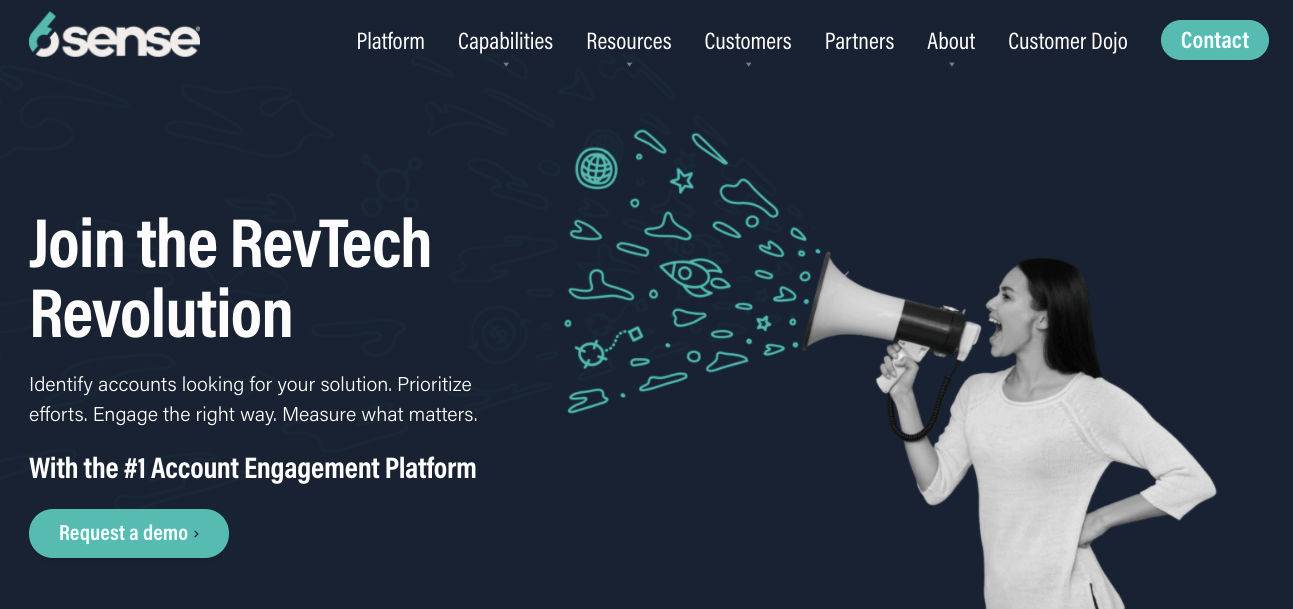
As I said earlier, I was on the buying committee (a fancy business word for people involved in the purchasing of expensive software) for an ABM platform. We reviewed three tools:
- 6sense
- Terminus
- Triblio
Triblio was disqualified fairly early in the process as their tool was more expensive than our initial Terminus quote and we felt the value didn’t justify the cost.
Our final evaluation came down to Terminus and 6sense, and our entire buying committee selected 6sense.
Why?
We felt that 6sense would better enable our outbound sales efforts, and their predictive model could help us identify accounts that we weren’t even selling to yet.
Here’s what the 6sense predictive model looks like. It shows how many accounts are in each buying stage:

Terminus did not have a predictive modeling feature, and to target accounts you had to upload a list manually or sync it from Salesforce.
Terminus didn’t help us find more new accounts to target, it would’ve helped us target the accounts we already knew we wanted to sell to.
Ultimately 6sense opened more doors for both the marketing and the sales teams.
Let’s get started by reviewing 6sense’s features.
6Sense Features
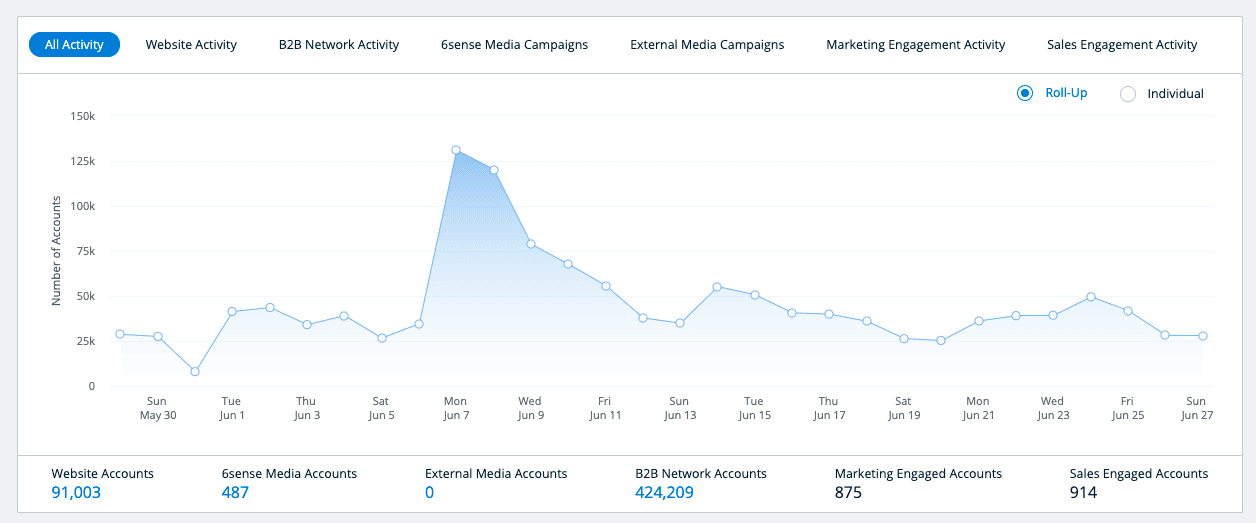
The 6sense platform has several main sections:
- Segments
- Campaigns
- Ad Library
- Orchestration (a basic form of automation)
- Alerting (Email and Slack alerts)
6sense connects to your CRM (Salesforce or Hubspot) and your marketing automation tool (Hubspot, Pardot, Marketo). They also place a javascript pixel on your website to track website visitors.
6sense also integrates with Slack, to send alerts to your sales reps when an account has increased research activity, and your sales enablement tools like Outreach or Salesloft.
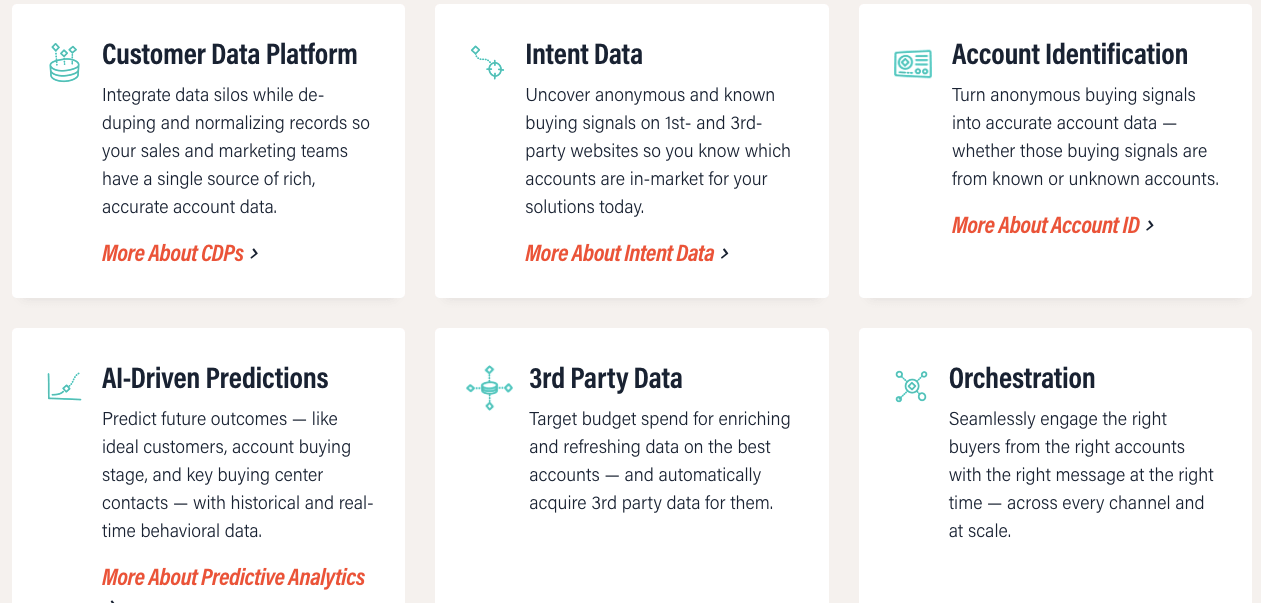
The above screenshot from their website does a good job giving an overview of 6senses feature set.
I’ll cover the two most used features in more detail below: Segments and Campaigns.
Segments
Everything in 6sense starts with a segment. A segment is a group with shared attributes that you define.
Here are some example segments:
- Pricing Page Visitors
- Pricing Page Visitors who also researched our top 2 competitors
- Accounts from Salesforce we closed lost 8 months ago due to them signing with a competitor
- A list of 20 key accounts our CEO wants us to sign
Once configured, accounts can enter and exit a segment automatically. This is one of the most valuable features for ABM platforms, because otherwise you have to build and maintain these segments manually.
Trust me, I’ve done them manually, and it sucks. Imagine your sales team has a list of 50 accounts to close by end-of-quarter that you upload into LinkedIn Ads, and when they close an account you have to remove it manually from your Ad campaign.
Nightmare fuel.
Segments source their data in three ways:
- Manual upload
- Sync an account list or report from Salesforce/Hubspot
- Select filters

The last option is the most powerful because it lets you pick from all of the available 6sense data, including what is synced from Salesforce.
Here’s a short list of what’s available
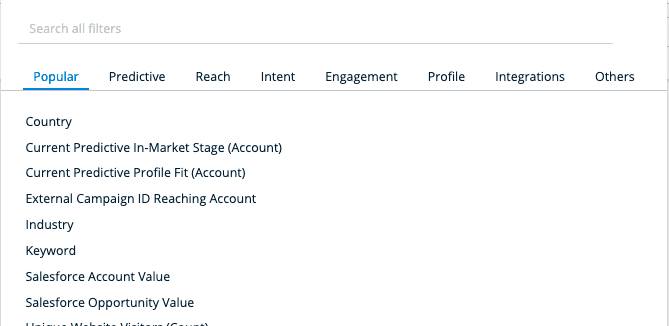
You can layer the predictive model scoring ontop of other filters. So not only can you target all accounts visiting your pricing page, you can filter it down to accounts in a buying stage that visited that page.
The ability to use the predictive model as a targeting layer is what sets 6sense apart from the competition, and why we decided to select them.
Here is a screenshot that shows the predictive model for a specific segment I created. Note that the total amount of accounts is significantly smaller than the similar screenshot I shared earlier.
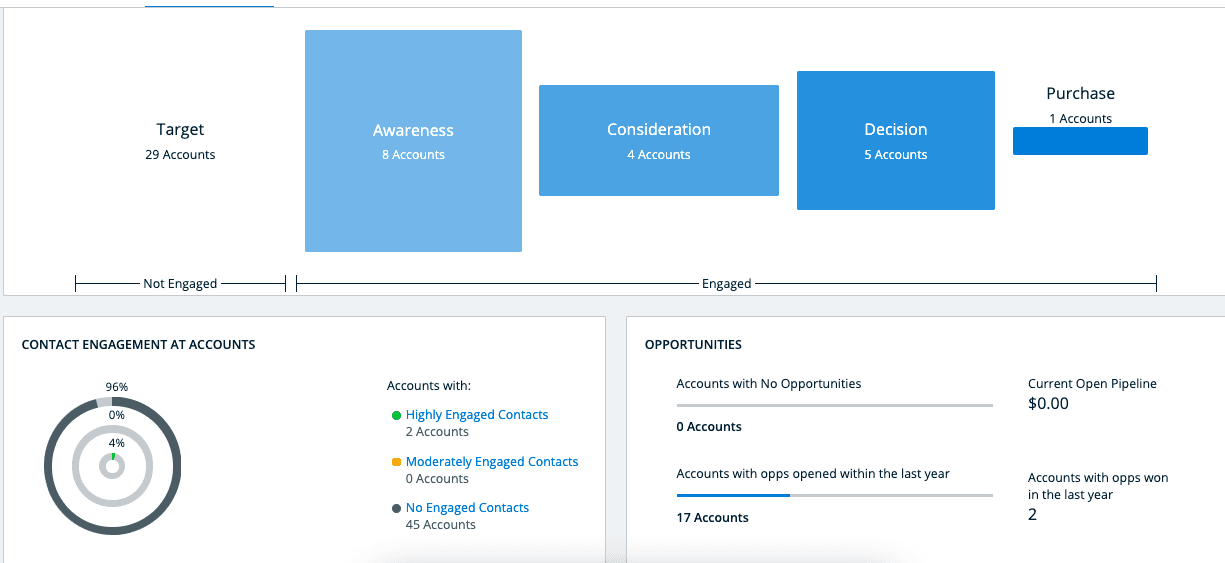
You can also view the amount of website activities by day for any specific segment
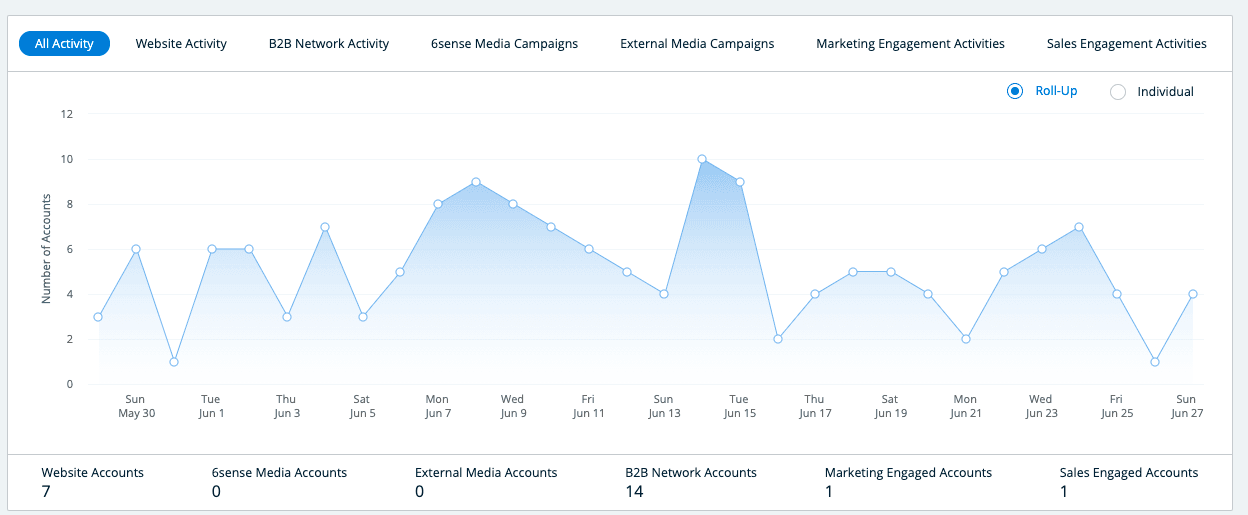
Building segments is the first step to using 6sense. Once they’re built you can target them with campaigns.
Campaigns

There are also three types of Campaigns you can build:
- Display
- Retargeting
- External (Facebook & LinkedIn)
Display campaigns use a DSP (Demand-side platform), which is a way to syndicate display ads across participating websites on the internet. It’s like a fancier, beefed up version of Google Display Network.
Retargeting campaigns also use the DSP but only to serve ads to users that visited your website.
External campaigns push your segment data into the LinkedIn and Facebook ad platforms, using a customer match audience. The thing to note about this is 6sense targets at the Account level, so your audiences in LinkedIn and Facebook will be huge. It’ll target every user at those accounts, so you will need to layer on additional targeting to narrow it back down.
The below screenshot shows the different types of campaigns that we’ve been spending on.
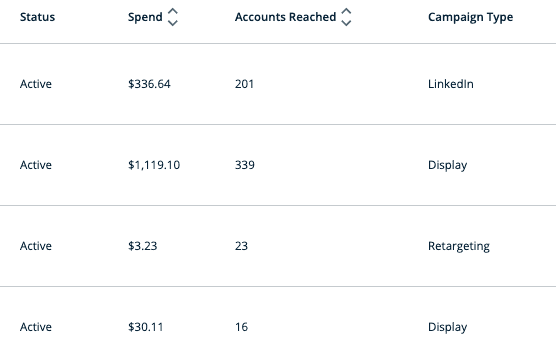
Once a campaign has been live there are additional statistics you can view. Things like impressions and clicks, but also things like influenced form fills.

Scrolling down that page are even more stats. Impressions by day and by hour.
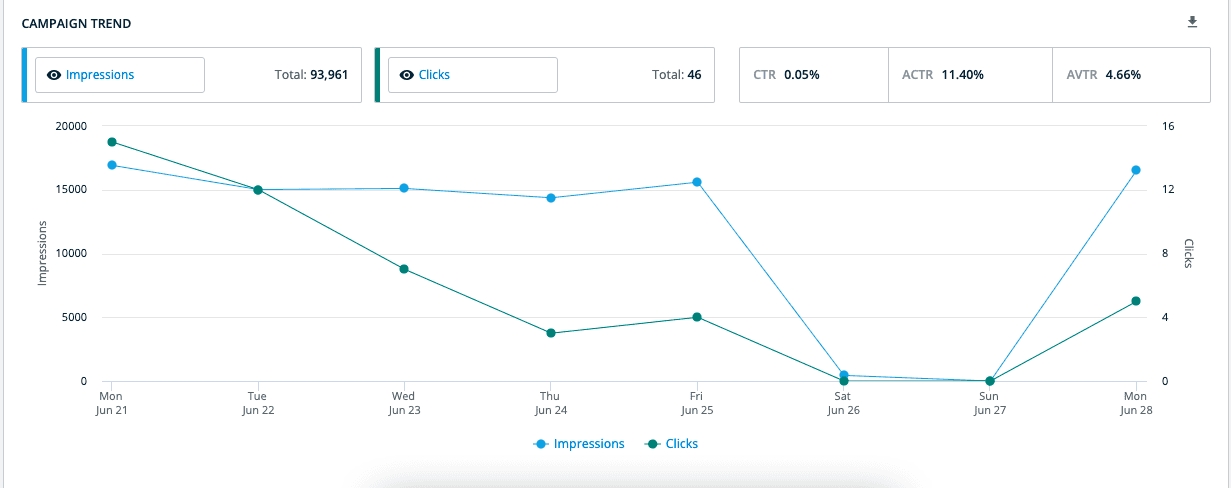

Two more screenshots before I wrap up the campaigns section. One shows which job titles your campaigns have targeted, based on internal 6sense data, and how the ads have been distributed in terms of frequency (how many ads were served to the same user), and on what websites.
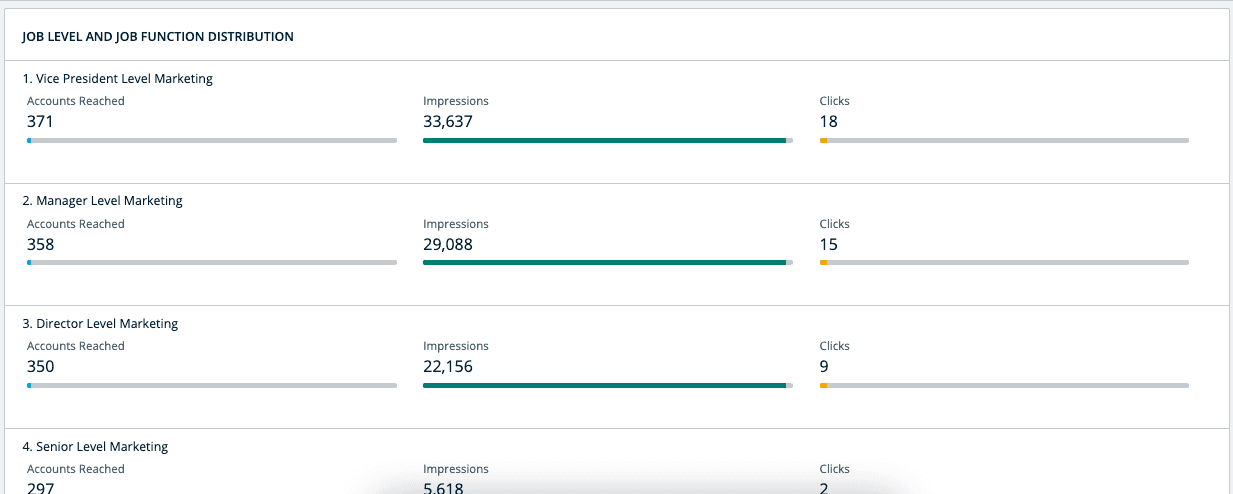
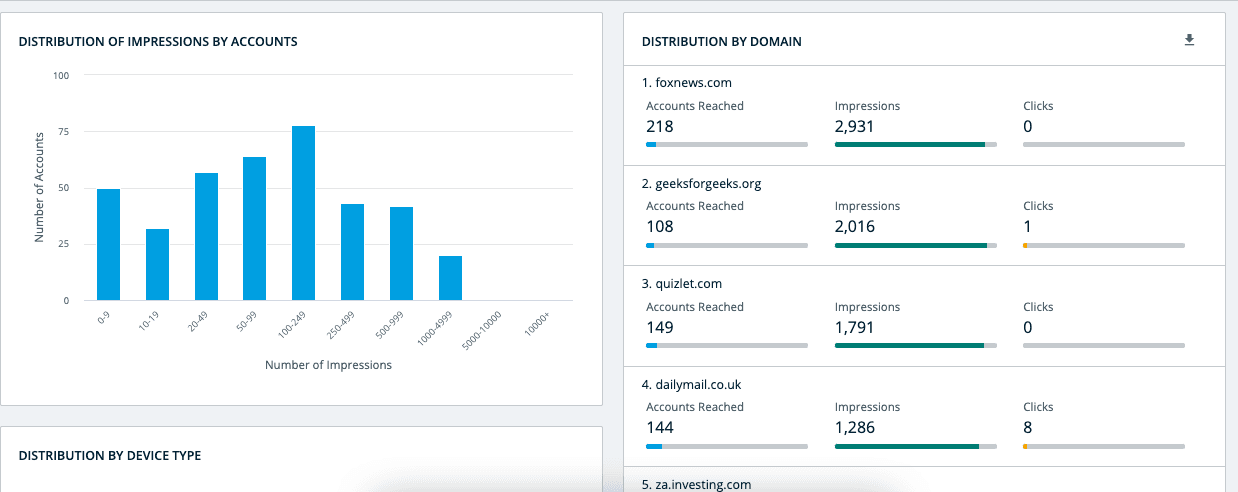
6sense Pricing
6sense is an enterprise software tool and priced accordingly.
If you are seriously shopping for 6sense, send me an email and I can make a personal intro to their team.
Enterprise software starts around $30k/year but expect to pay more for a premium tool like 6sense. The predictive model is an additional price.
6sense Alternatives
- Terminus
- Triblio
- Demandbase
- Metadata.io
Wrapping Up
We’re only 2 months into our contract with 6sense but the early results are promising.
I purposely avoided publishing specific conversion and revenue numbers in this article because I don’t want to give anything away.
But 6sense is working for our business, and I would recommend it to other companies.
